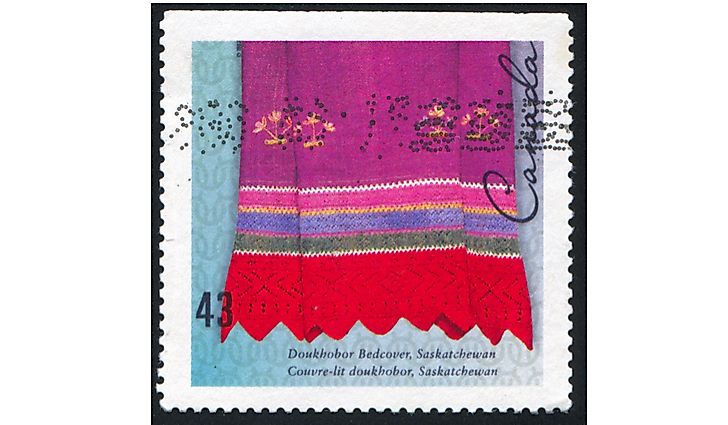Who Are the Doukhobors?

Who Are the Doukhobors?
Doukhobors, also known as Dukhobors, are a Spiritual Christian religious group that originated from Russia in the 18th century. Spiritual Christians believe that in addition to the bible, there are other supreme sources required in order to reach divine revelation. Followers are guided by their faith in God, which they believe makes them ambassadors of peace. The Doukhobors oppose civil authority.
Religious Philosophies of the Doukhobors
The philosophy and beliefs of the Doukhobors is based on the ten commandments. The guiding commandment is giving love to God and your neighbors, while the slogan is "Toil and Peaceful Life." Although living communally is no longer a major principle, the religion has maintained other cultures such as singing a cappella psalms, spiritual songs in Russian language, and the reciting of hymns. However, members do not practice baptism and take a partisan stand in politics. The Doukhobors are different from other Christian churches in that they do not believe in the literal interpretation of the resurrection, the Trinity, and the church liturgy. The concept of hell and heaven is also not literally interpreted, but a guiding principle is the goodness of human beings. Unique characteristics of the religion include being strong followers of traditional oral history, teamwork, rejection of personal materialism, memorized of bible verses, and the singing of hymns. Doukhobors resisted ordinary Russian Orthodox teachings.
Resistance and Migration
In the 17th and 18th century, the Doukhobors resisted government policies of the Russian Empire, forcing government agencies to enforce compliance with laws. Some areas of resistance included swearing allegiance or taking oaths, registering marriages, taking a portion of their harvests to the state emergency fund, refusal to serve in the military, as well as the questioning of taxation. As a result, the Russian government beat, imprisoned or persecuted the Doukhobors. This resistance and the consequential treatment attracted international attention, which criticized the Russian Empire. The Russian government, therefore, agreed to allow Doukhobors to leave Russia. There were three conditions to this migration: no emigrants could ever return; they were responsible for the cost of relocation; and those in prison or exile must complete their jail term before migrating. Emigrants first went to Cyprus and later to Canada. Canada was friendlier in that it offered the Doukhobors transport, land, exemption from joining the military, and migrants were free to establish a communal lifestyle. In Canada, the Doukhobors occupied approximately 773,400 acres, much of which included settlements in the province of Saskatchewan. The land available to Doukhobor immigrants was divided into "block settlement" areas: North Colony (2,400 settlers); South Colony (3,500), Good Spirit Lake (1,000); and Rosthern Colony (1,500).
Emigration Back to Russia
Beginning in the 1980s, many Doukhobors in Georgia started emigrating to Russia. Some groups migrated to Rostov Oblast, Tula Oblast, and Stavropol Krai. The migration of Doukhobors back to Russia made the population in Canada fall significantly. Most of the Doukhobors who remained in Canada were older in age, since it was easier for the young generation to move to Russia. However, more than 20,000 Doukhobors still live in Canada, and over one-third of that population is actively engaged Doukhobor culture.
Historical Sites and Museums
Several sites used by the Doukhobors in Canada have been converted to historical sites. These sites include the Doukhobor Suspension Bridge across the Kootenay River, the Community headquarters in Veregin, Saskatchewan, and the Doukhobor Discovery Centre in Castlegar, British Columbia, which contains artifacts pertaining to religious practices of the Doukhobors.











